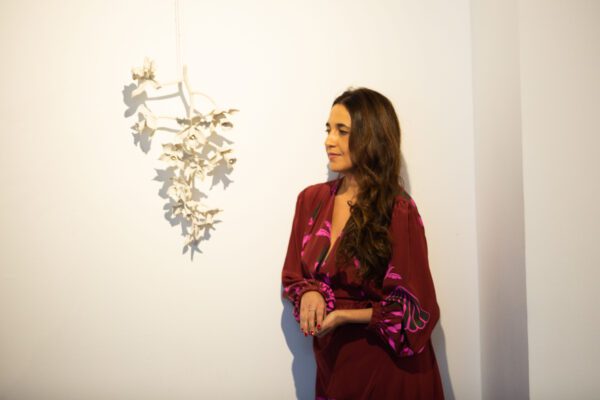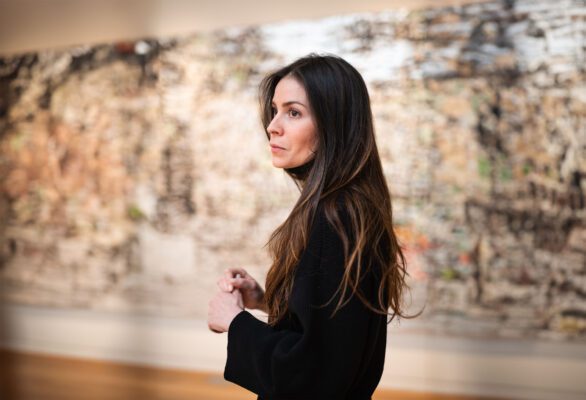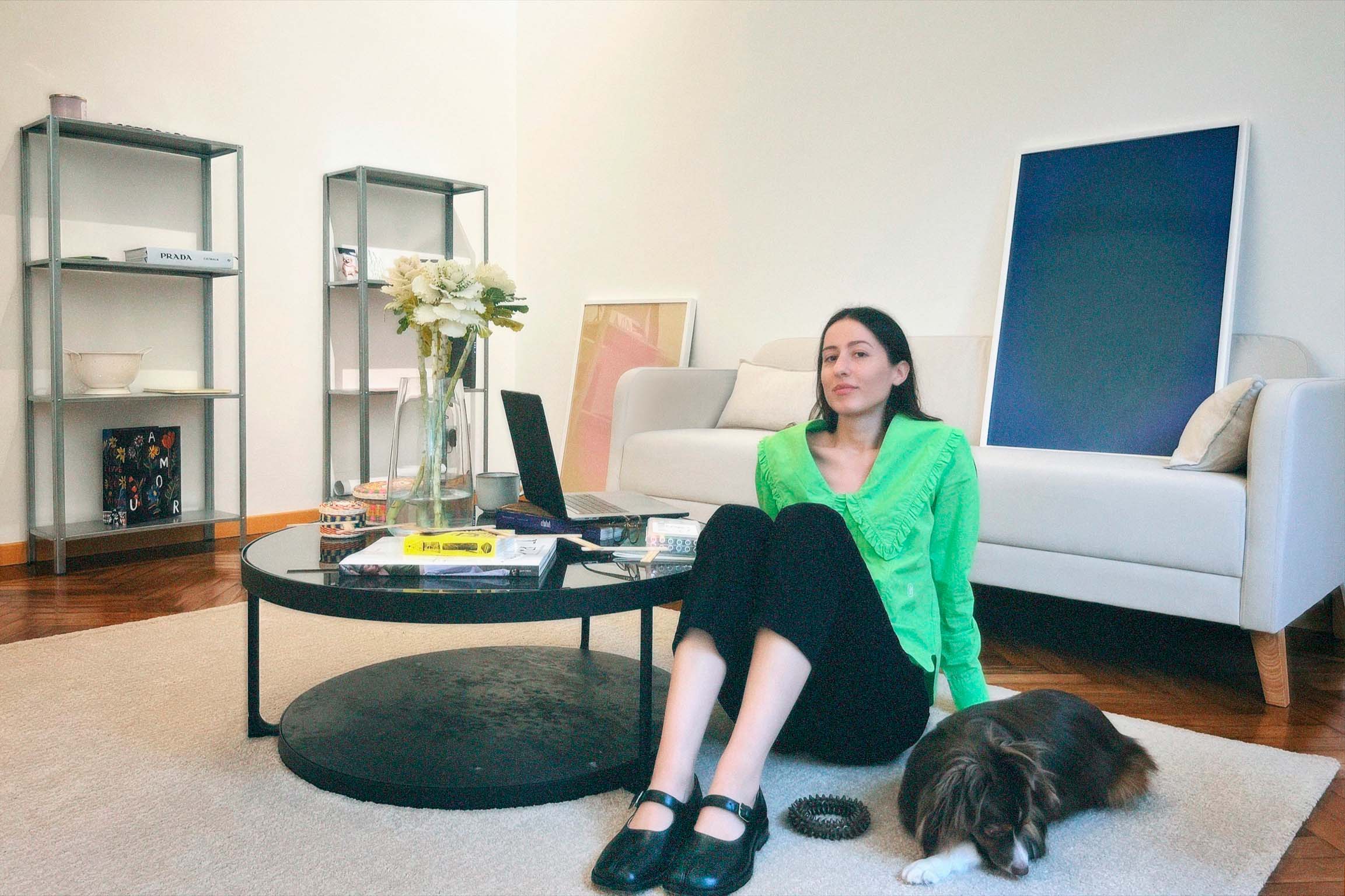
Jimena Montemayor in her apartment in Milan.
COFFEE WITH
JIMENA MONTEMAYOR: “THESE OPPORTUNITIES HAVE BEEN VERY MUCH ABOUT KNOCKING ON DOORS”
Name: Jimena Montemayor
Profession: Artist
Nationality: Mexican
Zodiac sign: Gemini
Instagram: @jimenamontemayor_
LATINNESS: Jimena, you recently moved to Milan from Mexico City. What inspired this move?
JIMENA: It was a combination of reasons why I decided to come here. Mainly, I was looking into going back to school. I graduated in 2012 from the University of Miami where I studied Studio Art, specializing in Graphic Design and Visual Journalism. Since then I’ve been working, and I’ve had that itch to do another course or a Masters. Over the last two years, I was looking into schools and found this one year course in industrial design because I wanted to learn and improve my skills.
The direction I’ve taken in the last three years has been somewhat connected to the art world, but I’ve been meaning to enter the design world. What I’ve been producing has been experimental in a way, I never took classes on how to build things or did research on particular materials– it was all very improvised.
Mexico was amazing for that because there are so many resources and it’s easy to find the artisans. That was the path I took, and I’m very happy with what I’ve produced, but there was always that itch of wishing I knew more.
LATINNESS: Would you say continuing education helps you get further in the art world?
JIMENA: So there was a time when I was applying to a school in Switzerland for a Masters in Fine Art, and when I was filling out my application, I had a pretty good relationship with Pedro Reyes. We met in Mexico City a few years back through a curator and we became friends. He was the first to buy one of my pieces, so that was obviously very touching, and we always kept in touch. He would tell me, “You don’t need to go back to school. Just do, do, do and you’ll learn.”
Yet, in the end, I thought, “I do want to be exposed to a classroom and get into that rhythm.” There are people that are very good with self-taught things, and while definitely, I’m included in that because I forced myself to learn creative programs, like Adobe, they show you the way in university. It’s technically up to you to explore and really be a pro. It takes years of experience and just hours of being in there and experimenting.
LATINNESS: Why Milan?
JIMENA: Well, I had an amazing experience of living in Geneva for two years when I was 15 during high school. My family moved from Mexico City to Geneva, and that was actually the first time I came to Europe. My life changed completely in the sense of everything: culture and language. I met all these amazing people while there, and until this day, here in Milan, I have two of my best friends whom I met through that experience.
I always thought that I’d like to go back to Europe, and Milan was just a very attractive destination in the sense that it’s the mecca of industrial design, or one of the most powerful cultures of design in the world. It just made sense, and in terms of timing, it seemed like the right moment, like a now or never kind of thing.
I’m excited. This is a new chapter and part of my intention is to simply connect with Italian artists and see what I can do here, but it’s funny how I get nostalgic about Miami and Mexico City.
LATINNESS: Is that nostalgia good for making art?
JIMENA: For sure. It’s definitely a tool. It’s like gas to get inspired, or even that same emotion triggers something and you start relating simple things like colors.
I went to a design museum the other day and there were these pieces from the Seventies. The colors reminded me a lot of Miami’s art deco colors.

Identity Bench, 2022, presented at the third edition of Salon Cosa.
LATINNESS: We met through your sister who is also in the creative industry. Are your parents creatives?
JIMENA: Actually, not at all. We had a very traditional upbringing, but when we started traveling more, especially when we arrived in Switzerland or in the States, whenever there was a chance to visit a museum, they would encourage us to go. I think the whole creative side has come from ourselves, though.
The most artistic touch of our upbringing was on my mother’s side. My grandparents worked in the film industry in Mexico. My grandfather was Director of Panavision for years, so when we were there, we’d sometimes go to Churubusco Studios. I don’t know if you know them, they’re these massive movie sets that were more popular back in the day.
At some point I wanted to be an actress, but my grandmother was like, “No, absolutely not, I would never allow it.” There was always talk about films with my mom’s side of the family.
LATINNESS: How has the digital age influenced your work as an artist?
JIMENA: Since I got into graphic design during undergrad, I was always into going to art school, but my parents wanted me to have a broader education. I was 18 and we had just arrived in the States, where art schools are very expensive, so I turned to graphic design and communications.
My first job out of college was at Allure magazine as a Designer/Art Assistant back in Times Square. I’m bringing this up because graphic design, in general, has also stepped into my art making. It’s just inevitable: my aesthetics, precision and use of colors and white space. I feel like my brain has worked itself to look at canvases the same way as designing a layout or a drawing.
When I started creating art, I was working full-time, and in my free time, my computer was always my creative outlet. I spent hours just drawing or tracing things on Photoshop, and I’d explore how to create what I wanted digitally just because an analog interpretation required a lot of paper and materials. Having that analog experience is definitely essential for any creative person, but I gave that power to the whole digital world and felt very proud of whatever I was producing. The possibilities are endless, and I just pushed that as my artwork. I’d draw and sketch around, but when I gave birth to my project, it was always digital.
So this increasingly digital world has been kind of a blessing in disguise. I remember when I was continuously printing things, and I’d feel kind of insecure about it. This was around 2014 or 2015, and I wasn’t as proud to say I did that on the computer versus now with NFTs. It’s definitely been a very interesting path, the digital art world. Possibilities are endless, so that’s also where it gets tricky. Now there are so many talented people that are geniuses on the computer, and sometimes I think I need to take some more tutorials on how to animate more, etc.
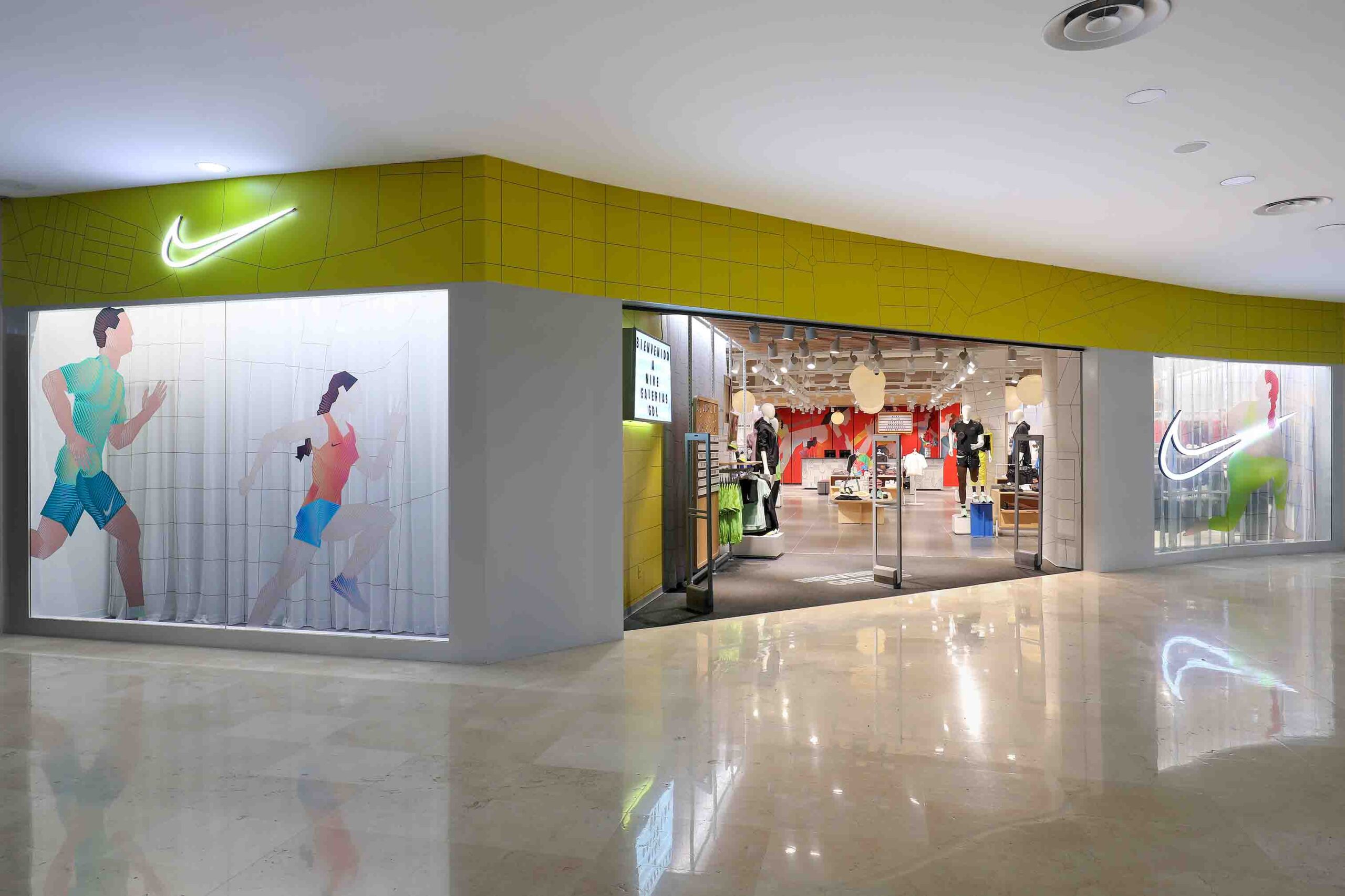
A collaboration with Nike Live in Guadalajara, Mexico.
LATINNESS: This year you launched a collaboration with Nike in Mexico. How do these opportunities come about?
JIMENA: I’d love to say I have a manager or an agency, but this has been very much about knocking on doors. The Nike thing came as a miracle. It was through a friend of mine, who curated a show two years ago in Mexico City. He invited me to be in the show and we remained super close.
About a year ago he told me that his partner, who works for Nike, was pitching some artists from Mexico for this project called Nike Live. “Would you mind if I showed him your work?” he asked, and of course, I said, “By all means! I’d love to collaborate with them.” Four months of silence passed, and then one day he called to say I got it.
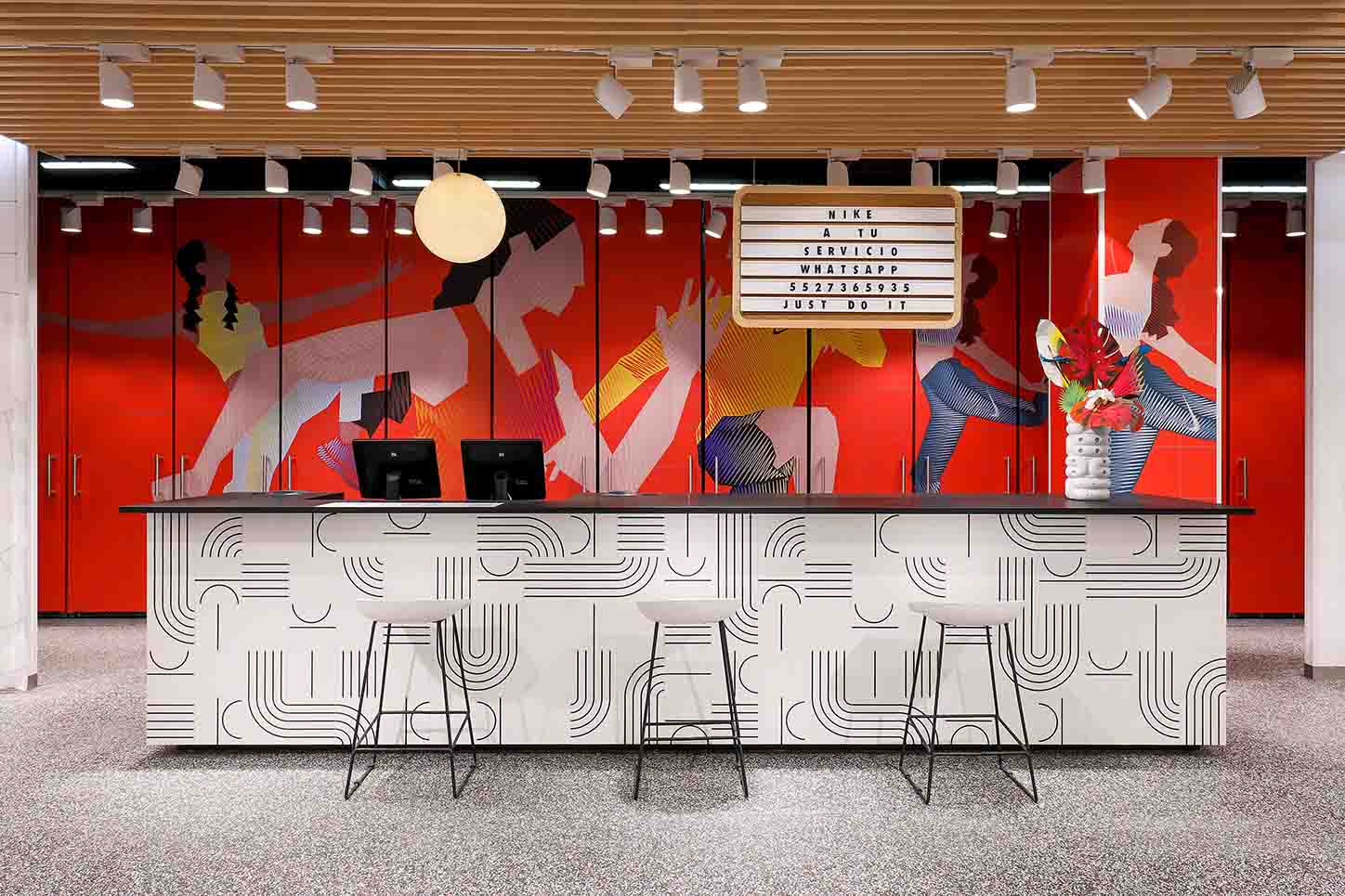
Details of the collaboration with Nike Live in Guadalajara, Mexico.
LATINNESS: Before that, you worked on a special project with Danish label Ganni, as well. Was it a similar experience?
JIMENA: Miami also has a very small community, so there was talk of the Ganni store opening, and I met the store manager one day. I told her, “Ganni always collaborates with local artists. What’s the deal here? You guys haven’t done anything.” It was an ongoing conversation, and I said “Listen, let me send you a proposal and you can start talking to your team in New York.” This was prior to the pandemic, so during the pandemic, everything was canceled.
It was a long time, a lot of emails, and a lot of her saying, “I don’t know if they’re going to like this. Let’s think of something else.” So just knocking, knocking at that door. I’m a big fan of Ganni, and because I’m creating things, I’m careful of who I collaborate with. My work has deviated in a more commercial aspect in a way, but I always try to keep that flavor of authenticity and uniqueness.
Then it finally happened last December, so a year ago. That was also a great feeling and a great experience. It all happened like that— looking at who I want to collaborate with and reaching out. It’s a process and it’s quite exhausting, but you have to do it.
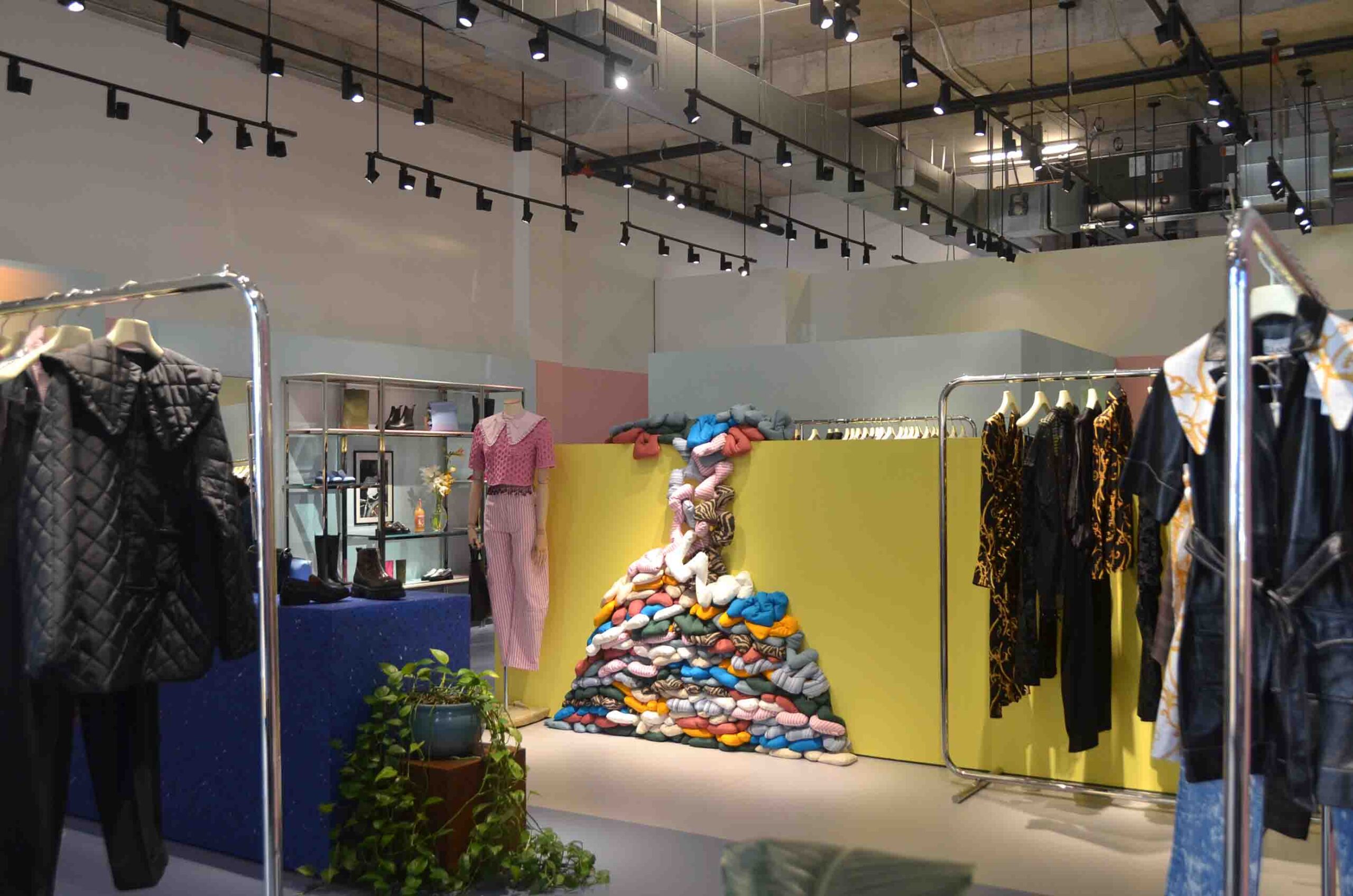
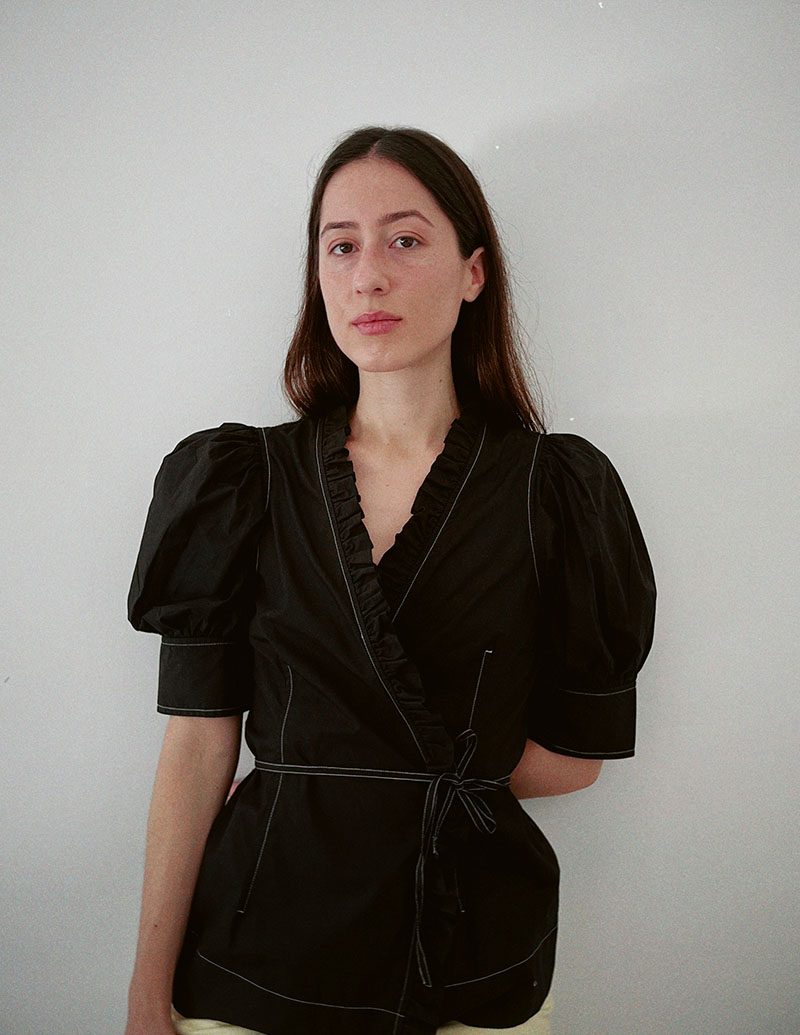
Artist Jimena Montemayor.
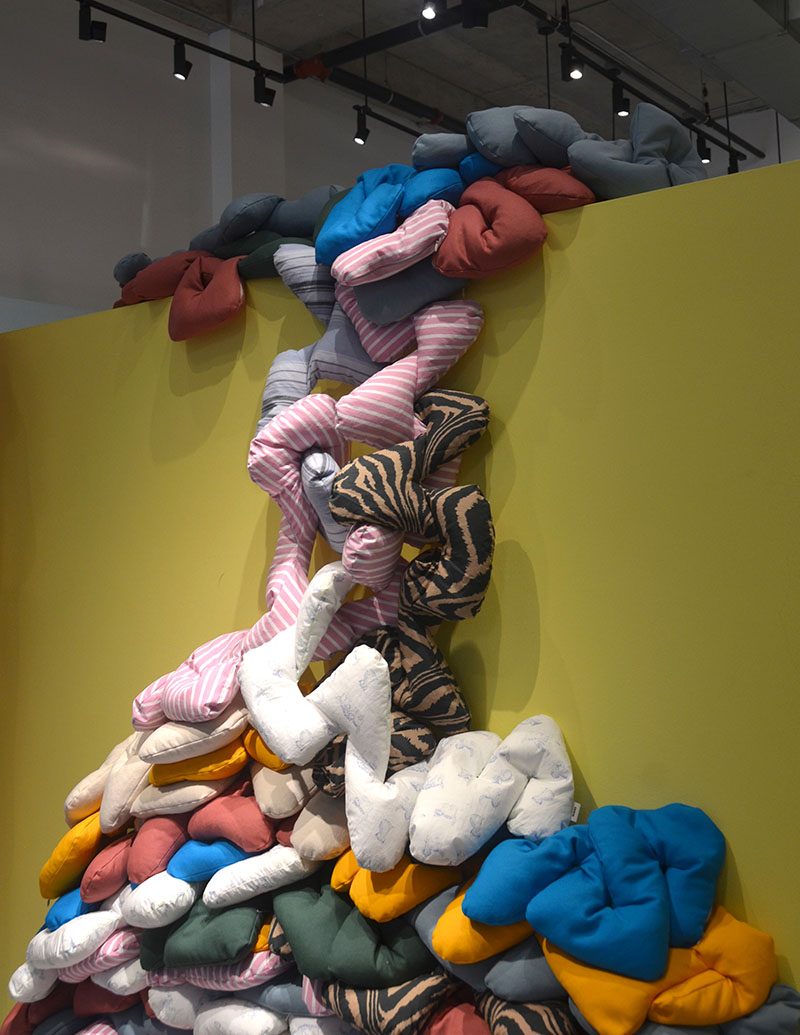
Wurms takeover at Ganni’s boutique in Miami Design District.
LATINNESS: That’s good advice for our younger readers. Aside from these commercial collaborations, you’ve been linked with big names in Mexico’s art world like Bosco Sodi and Fernando Lebrija.
JIMENA: Yes, that was an exhibition that already passed. It was funny because the exhibition revolved around artists that played tennis. It was very random, but that’s the magic of Mexico. It was very word-of-mouth. It’s funny how Mexico city is huge, but in the arts, you go to one event and can meet this person and that person.
My good friend, Marina, who’s also a very talented artist and illustrator, is good friends with the wife of Mexican artist Mario Garcia Torres. They were having dinner and Mario was talking about the show and tennis, and he found out that I played tennis. Mario organized it, and the person running the space called FF projects reached out to me. It was a very organic way of curating.
I worked with him and put together some digital drawings, which he liked— it was a small collaboration. That was very exciting because the show looked really nice and it was an honor to be in space with Bosco Sodi and Lebrija. Just wow. I couldn’t see it because it took place in Monterrey and I couldn’t travel there. But, there’s still the tennis tournament pending.
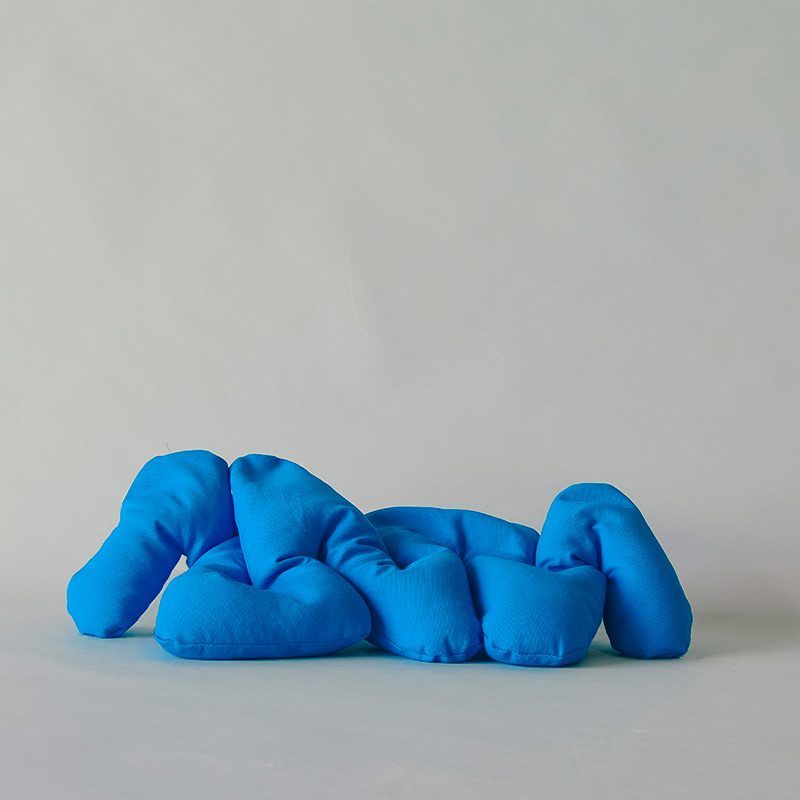
Accent cushions from the Wurms series.
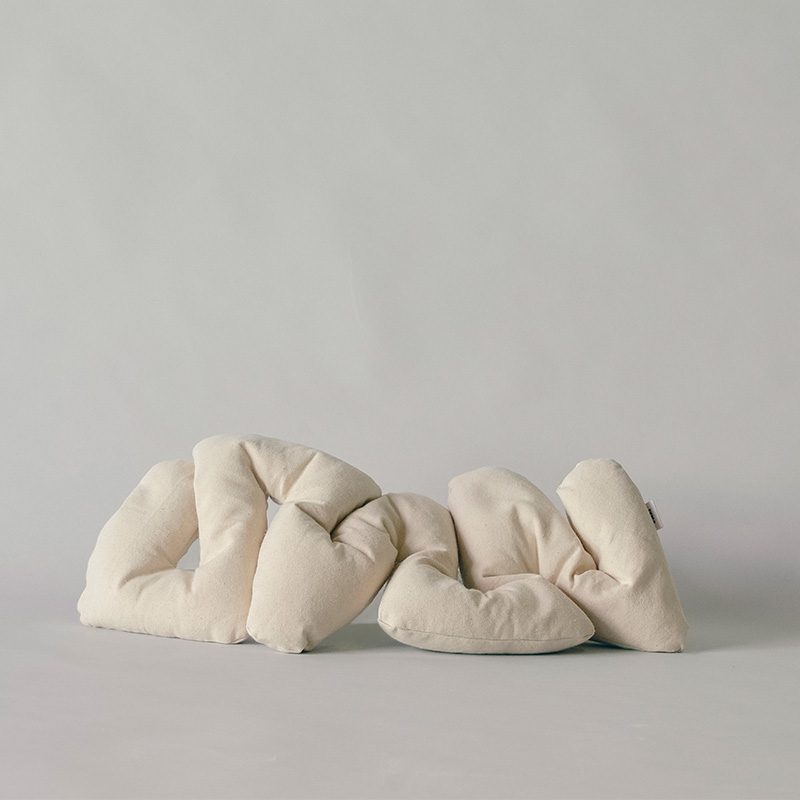

‘Untitled Tennis Tournament’ exhibition, 2022, FF projects, Monterrey, Mexico.
LATINNESS: You’ve accomplished a lot in a short time. Is there a dream project you’re still striving for?
JIMENA: One of my dreams would be to collaborate with a musician or to design a set for a ballet or concert stage. I’d love to go bigger. With my work as well, I’d love to continue doing my furniture line.
With Ganni, I released this project called Wurms (2021), which was exciting and it gave me a taste of how much work it is to manage a brand of itself. So at the moment, the most recent pieces I’ve done are bigger. I made one for the Standard in Miami Beach with Simonett.
It would be great to get more commissions or to collaborate with other people that want these shapes in their spaces. I truly love collaborating with people. It keeps your creativity evolving and changing and exciting.
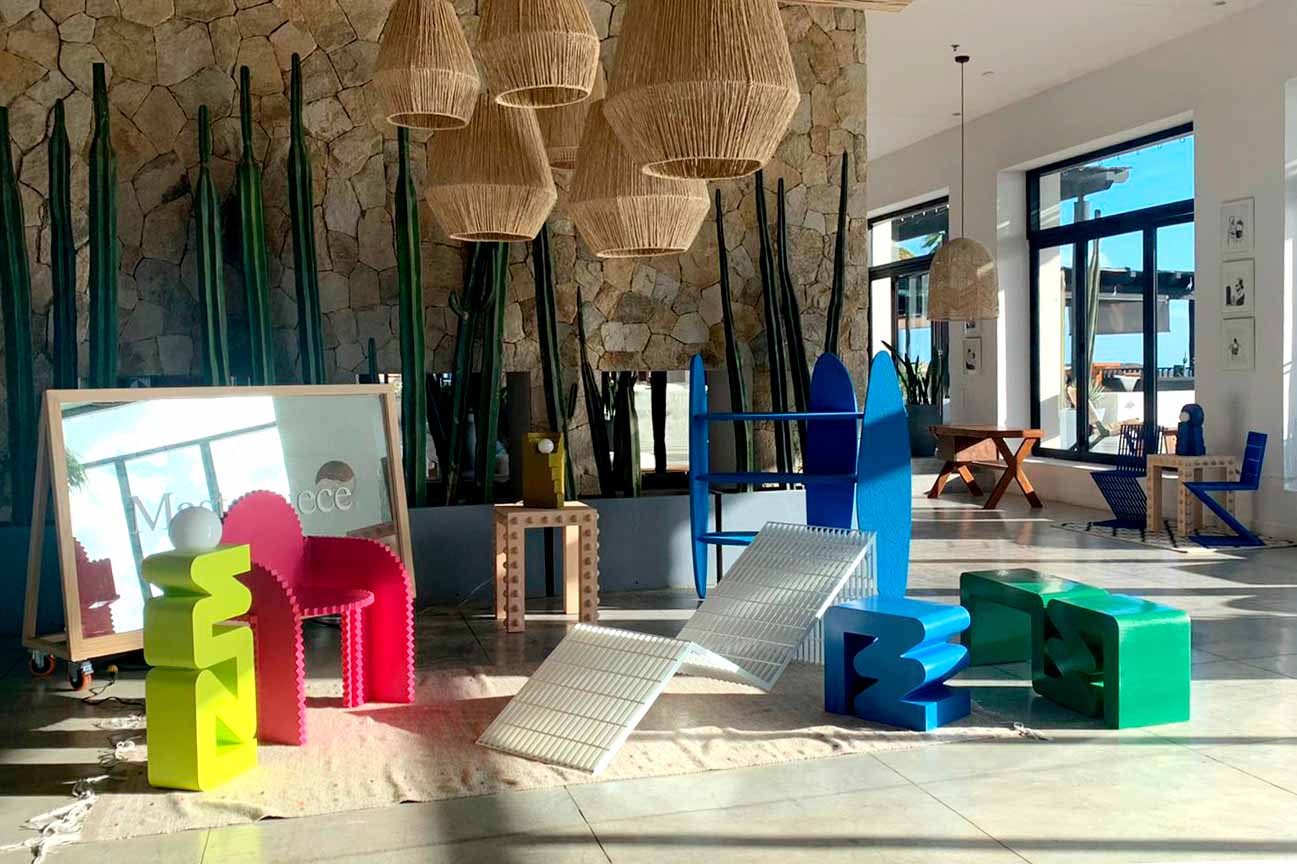
Salon Cosa pop-up at Hotel El Ganzo, Los Cabos.
LATINNESS: On the topic of Wurms, we’re curious about your fascination with the line as a subject matter.
JIMENA: It really comes down to my graphic design classes. There was one particular course where the teacher assigned us this project in which we had to create a portrait using a pattern of whatever shape we wanted. I decided to do the zig-zag, so imitating the classic cross hatching you do manually or in analog.
I tried to recreate that digitally, and it became a fascination with using something as simple as a line and bringing it to another dimension, allowing it to have another life. It’s very simple, but it was just repetition, exploration, experimenting, and it became one of my stamps.
Something I’m very happy about is that, particularly in Mexico, because it’s where I’ve shown more work and have my strongest art community, sometimes people will say: “Oh, yea I recognized this was your piece.” I love moments like that when they start identifying my work because that’s been my OG.
Now it’s kind of a trend. There are a lot of people exploring this same concept. There must be something in our generation’s psychology that’s made us go in that route. It’s my challenge now to do something different, to keep pushing and take this to another place.
Images courtesy of Jimena Montemayor.

